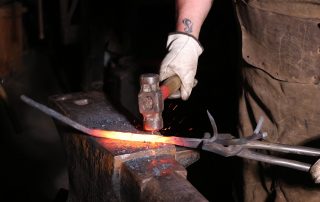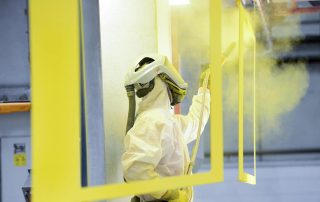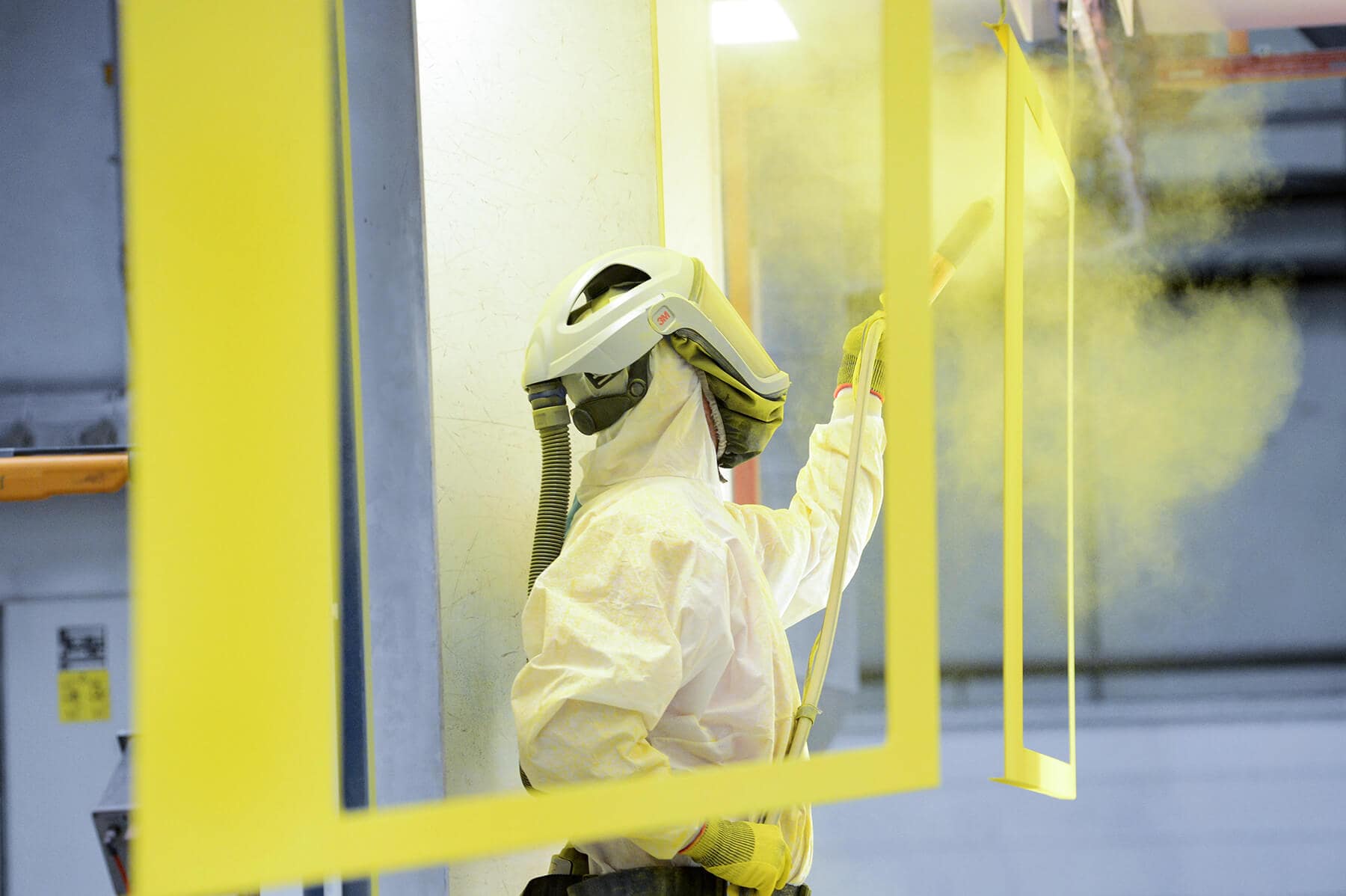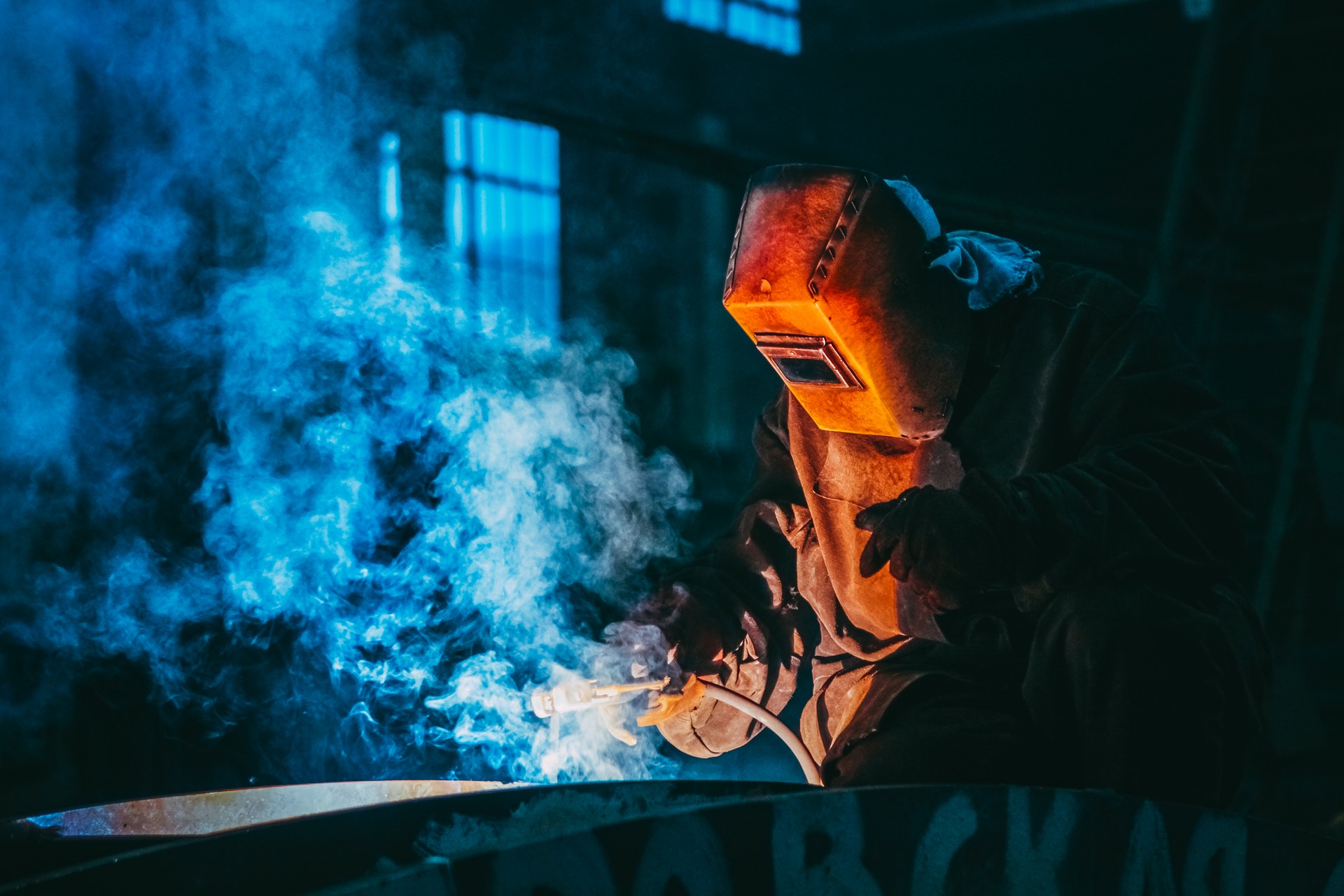A Brief History of Welding
Welding has been critical to the development of civilisations, but not many know where it began or how it evolved. So, here's our brief rundown of metalworking history. Bronze and Iron Ages Welding can trace its roots back to 4000 BC, when humans first started shaping and fusing bronze. The oldest known examples of welded items are small decorated boxes made of gold, originating during the bronze age. Sometime during ...
The Benefits of Powder Coating
Powder coating is one of the best welding finishes on the market. Here’s why. 1. Durability The powder coating process involves applying and melting thermoplastic or thermoset powder to a surface and letting it cool and harden. So whereas liquid coatings like paints are essentially a second skin, powder coating is a suit of armour. Powder coats are highly resistant to chemical, weather, water, salt, and impact damage and generally ...
What are the 4 Types of Welding?
There are nearly 100 welding processes to date, but the four main types are MIG, Stick, Flux-cored and Stick. And if you want to learn more about them than just the names, here’s our rundown of how they work and their uses and benefits. MIG MIG (metal inert gas) welding is used for large, thick materials. It uses heat generated through an electric current to melt metal parts together, which ...
What’s New
- Categories: Project
Parliament House is one of the most iconic buildings in Australia. With a forecourt reflecting Australia’s ancient beginnings, an architectural design made to respond to our climate, environment, vegetation, and light levels, and a foyer incorporating the colours of the Australian landscape, it’s as much a functional building as it is a national symbol. In the interest of preserving its gorgeous design, any changes in the site’s construction needed to be handled with a great deal of care. So when we received a request to install a new ramp, we knew that the project would be a challenge. The specs The project’s specifications ramped up the difficulty even further Firstly, the ramp had to be removable. Not only that, removal had to be easy; should the government decide to split the ramp from the building, it had to be done without any major interventions or modifications at the risk of damaging the building’s features. Secondly, the railings needed to be welded out of brass, a metal that’s notoriously difficult to weld. It’s extremely dense, and due to its high zinc content, it absorbs heat like nobody’s business. And thirdly, the railing shape was complex. So instead of just using mandrel bends to support the railing stock and bend it in a couple of places (as is common in railings), the entire railing stock had to be made out of them, making for a difficult weld. Overcoming the hurdles Obviously, we didn’t back down from the challenge. Our welders pride themselves on being able to handle anything for a reason. To ensure the brass was up to par and to make removal not damaging to the building, we elected to use partial welding. Our method involved combining mechanical locking with a specialised adhesive. And while shaping and welding a series of mandrel bends into a full-fledged stock wasn’t easy, our team, through attention to detail, unparalleled expertise, and a great deal of patience, got the job done right. The results So, Canberra’s stunning parliament house now has another ramp. One that meshes with the site’s aesthetics and won’t harm its facade. Keep an eye out for it the next time you visit the parliament house.
22.12.21
- Categories: News
Welding has been critical to the development of civilisations, but not many know where it began or how it evolved. So, here's our brief rundown of metalworking history. Bronze and Iron Ages Welding can trace its roots back to 4000 BC, when humans first started shaping and fusing bronze. The oldest known examples of welded items are small decorated boxes made of gold, originating during the bronze age. Sometime during the 3000s (BC), Egyptians pressure welded weapons like swords using heated charcoal. The 1500s saw the rise of iron smelting, and in 589 AD, Chinese blacksmiths first forged iron into steel. Middle Ages Forge welding became commonplace. Smithies cropped up across Europe and beyond, where blacksmiths crafted nails, hooks, swords, and furniture by heating and beating metal into the desired shape. 19th-20th Centuries Advancements in welding really started picking up during the Industrial Revolution. 1800 - Sir Humphrey Davey used a battery to produce an arc between two carbon electrodes 1802 - Vasiliy Petrov created a stable electric arc, enabling metalworkers to melt metals with greater precision 1836 - Edmund Davey discovered acetylene, a chemical compound instrumental in modern-day welding 1900-1914 saw the invention and refining of coated metal electrodes, which allowed for more stable arcs The 1920s saw the introduction of automatic welding and more welding glasses to produce sturdier welds And from the 1930s to the late 1990s, we got stud, friction, and plasma arc welding, as well as developments in gas tungsten arc welding (GTAW) that made it much safer to do and more commonplace. Now Thanks to the hundreds of generations of humans insisting on making metal into objects easier and safer, we have the welding landscape of today. With around 90 different welding processes in existence and constant refining and development, welders have set new standards for safety and craftsmanship We're keen to see where the future takes us.
21.12.21
- Categories: News
Powder coating is one of the best welding finishes on the market. Here’s why. 1. Durability The powder coating process involves applying and melting thermoplastic or thermoset powder to a surface and letting it cool and harden. So whereas liquid coatings like paints are essentially a second skin, powder coating is a suit of armour. Powder coats are highly resistant to chemical, weather, water, salt, and impact damage and generally won’t chip or scratch. This makes them perfect for outdoor installations like sculptures and balcony railings. And as they can go on thicker without unsightly sagging or warping, your new installation can have even greater protection. 1. Customisability Powder coatings are available in a huge variety of colour options. Not to mention that as different coloured powders can be mixed, you essentially have infinite possibilities before you. We can even coat your next installation in multiple tones. Adding to the customisability is the wide variety of finish options, which include everything from a matte to a high-gloss look and a smooth to coarse texture. 1. Short curing time Powder coats can generally be cured in 10-15 minutes, but the timing does depend on project size, coat thickness, and the number of colours we apply. For comparison, paint can take hours to dry without heat and up to an hour with. 1. Environmentally friendly You can generally clean up and reuse spilt salt without any problems, but spilt milk is a different story. Same thing with powder coats and paints. Where paint runoff is unreclaimable, powders are, making for much less waste in the coating process. Additionally, powder coating uses no volatile organic compounds (VOCs). This is because powder coats don’t contain any solvents, unlike their liquid counterparts. In short, a powder coat would make a great addition to your next installation. And if you’re ready to get one applied, get in touch with us today.
21.12.21
- Categories: News
There are nearly 100 welding processes to date, but the four main types are MIG, Stick, Flux-cored and Stick. And if you want to learn more about them than just the names, here’s our rundown of how they work and their uses and benefits. MIG MIG (metal inert gas) welding is used for large, thick materials. It uses heat generated through an electric current to melt metal parts together, which fuse when cooled. The current works through a consumable wire that acts as both electrode and filler. Stick Stick welding is also known as shielded metal arc welding or manual metal arc welding (SMAW and MMA for short, respectively). Like MIG, it uses a consumable electrode (the stick), which fuses metals through heat. One key difference between MIG and stick welding is that stick is portable, making it ideal for maintenance and repair, on-site construction welds, and underwater pipelines. Flux-Cored Like MIG welding, flux-cored arc welding (FCAW) feeds a continuous hollow wire into the weld joint through the weld gun. Where FCAW differs is that it doesn’t need an external shielding gas to protect the heated joint. Instead, the gas is created through the FCAW process itself via a flux within the wire (thus the name). This allows us welders increased mobility and the ability to flux weld outdoors, even in poorer weather. TIG TIG (tungsten inert gas for long) welding works similarly to MIG. But there are a few key differences. TIG welding uses a non-consumable tungsten electrode (thus the name) and can be done without a filler. Additionally, TIG welding gives us much greater control and precision during the welding process than MIG welding, at the trade-off of welders needing much more training to properly use the method. If you want to learn more about these methods or about welding in general, keep up with our blog.
21.12.21







